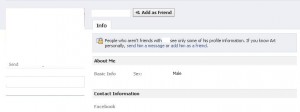Community corrections agencies are increasing being asked to manage cyber-risk. Some prohibit all computer or Internet use. Others conduct periodic computer searches. Many are relying on computer monitoring software to do the lion’s share of the risk management. So how does wiretap laws pertain to community corrections computer monitoring? Lets see!
Title III in this article collectively refers to wiretap laws at the federal and state level. Kerr writes this in regards to the federal statute:
“The basic structure of the Wiretap Act is surprising simple. The statue envisions that an individual is exchanging communication with another person or machine. The state makes it a crime for someone who is not a party to the communication to use an interrupting device to intentionally access the private communication in “real time.” (pg. 451)
How does this relate to computer monitoring then? In O’Brien v. O’Brien, Case No. 5D03-3484, (2005) a Florida appellate court ruled that computer monitoring by a spouse was governed by the state’s wiretap statute, which was patterned after the federal law (18 U.S.C. § 2501). In this case the spouse used software to capture chats, instant messages, and web browsing by her husband, without his knowledge. The software eventually captured the husband’s communication with his girlfriend, who also was unaware of the monitoring. The appellate court ruled in part that …. “spyware installed by the wife intercepted the electronic communication contemporaneously with transmission, copied it, and routed the copy to a file in the computer’s hard drive, the electronic communications were intercepted in violation of the Florida Act.”
Some community corrections officers are deploying similar monitoring software, particularly on sex offenders’ computers. The installation is usually through a supervision condition authority. Additionally, the offender and all household members who may use the computer are always fully aware that the monitoring software is present. Progressive agencies also place electronic consent banners at the start up of the operating system and place hard copy warning stickers letting all who may use the system know they have no expectation of privacy if they use the computer.
Federal law provides a minimum level of privacy protection with the wiretap statute. Some states have greater protections. The federal Title III law and states with similar laws provide for some exceptions to a wire tap. Several exceptions are germane here. The first is commonly known as consent. There are two kinds of consent. The first is one party consent, which is contained in the federal law and 38 state statutes.
Under one party consent if one person knows about the inception (monitoring) and agrees, the monitoring can occur. In a correctional setting, the offender knows as well as all who use the system, that the computer is being monitored. This is established by the use of the banner and/or hard copy notices. Additionally under federal law there is also an exception for a person acting under “color of law” to intercept a wire, oral, or electronic communication with consent of one party to the communication.
The other type of consent is called two party. This means that both parties to the communication have to consent to the monitoring. There are twelve states that have two party consent (CA, CN, FL, IL, MD, MA, MI, MO, NV, NH, PA, and WA, Reporters Committee for Free Press). Some two party states, such as Florida, allow an exception to law enforcement with one party consent, when…. “the purpose of such interception is to obtain evidence of a criminal act.” (FL 934.03(1)(c)). The purpose of correctional computer monitoring is to insure compliance not necessarily to obtain evidence of a criminal act. For instance, monitoring may used to insure a sex offender is not viewing adult pornography, which would be a treatment issue and not a criminal act.
Two party consent can therefore be an important consideration if computer monitoring is occurring. The offender and their household’s consent means little when they communicate via the computer with someone who is not aware the monitoring is taking place. The third party person they may communicate with can’t see the warning banner or the stickers. Lets see how this plays out.
- Sally’s son is being supervised for downloading child pornography. They live in a two party state and her son’s officer has installed monitoring software on the computer so he can have Internet access to look for work. Sally is okay with this as she wants her son to say out of trouble. The software will be on the computer as long as her son is in the home and on supervision.
- Sometime after the installation, Sally gets online and enters a chat room where a discussion on breast cancer is taking place. There are five others in the chat room. Sally posts in the chat room as well as communicates via instant messaging with the other participants. Additionally, she sends and receives e-mails from all them after exiting the chat room. All of this activity is being recorded by the monitoring software. Sally knows about the monitoring software but the five others do not.
Do the five have a reduced expectation of privacy for their chat room discussions, yes of course? But what about the private instant messages or their e-mails with Sally? You see the problem.
Some monitoring software alleviates this problem by limiting monitoring to only the offender’s usage. One company actually uses a biometric device to ensure only the offender is being monitored. But the offender’s communications are still obviously being monitored. It is hard to imagine why a sex offender would be allowed in a chat room, but use of e-mail is another matter. The offender’s exchange of e-mail with someone else could also create the same consent issues to monitoring in a two party state.
Now the second exception to wire taps is the issuance of a court order. Under federal law there are specific time constraints and judicial oversight of the entire process. Additionally, there are specific requirements to get a wiretap order issued. They include a finding of probable cause that the following exists:
” a) there is probable cause that an individual is committing or about to commit a specific crime; there is the belief that particular communications concerning that offense will be obtained through such interception; and c) normal investigative procedures have been tried and have failed or reasonably appear to be unlikely to succeed if tried or to be too dangerous.”
Even a supervision condition for monitoring software, ordered by a Court is hard to imagine being the same. There is no probable cause to believe the offender is committing or about to commit a new crime. Additionally, a periodic computer search can be used to find the evidence so a normal investigative procedure could be used. Finally, computer monitoring on an offender can literaly be on the entire term of supervision, which is often years in duration as opposed to days or months common in wiretap orders.
It is possible that monitoring software might follow what has occurred with probation searches. Specifically, in United States v. Knights, 122 S.Ct.587 (2002), the Supreme Court “…held warrantless search of a probationer’s apartment, supported by reasonable suspicion and authorized by a condition of his probation, was reasonable within the meaning of the Fourth Amendment.” Does this mean an appellate Court could carve out some kind of exception for computer monitoring for probation/paroles because they have an reduced expectation of privacy? What about the order’s impact on others inside and outside of the offender’s home who may be involved in communications with the offender’s monitored computer?
By the way, what is the down side of breaking a wiretap law? How does possible criminal and/or civil penalties grab you? Clearly some thought has to go into computer monitoring in states with two party consent issues. At a minimum agency’s should do the following:
Know throughly what computer monitoring they are using can do and can not do. Some important considerations are:
- Is a electronic consent banner part of the program?
- Can it be configured to only capture the offender’s activities?
- Can it be set to prevent incoming communication from non-supervised person’s from being captured?
- Can it block programs that might create two party consent programs, such a chat or Instant message programs?
- Can it filter data to monitor or alert, to only that which is germane to the conviction or problem conduct?
- Can it set to capture only outgoing communication from the offender
With a working knowledge of the software discuss the situation with a Title III legal expert in the jurisdiction to insure that if monitoring can be deployed that it is done only in a manner consistent with state and federal law. The last thing you want to do is create bad case law or worse, by not dealing with this “gorilla.”
References
Electronic Surveillance Laws, Accessed from http://www.ncsl.org/default.aspx?tabid=13492
Florida State 934.03: Interception and disclosure of wire, oral, or electronic communications prohibited. Accessed from http://www.leg.state.fl.us/Statutes/index.cfm?App_mode=Display_Statute&Search_String=&URL=0900-0999/0934/Sections/0934.03.html
Kerr, Orin (2006) Computer Crime Law, Thompson, St. Paul
O’Brien v. O’Brien, Case No. 5D03-3484, (2005). Accessed from http://www.5dca.org/Opinions/Opin2005/020705/5D03-3484.pdf
Reporters Committee for Free Press “Can We Tape?” Accessed from http://www.rcfp.org/taping/
United States v. Knights, 122 S.Ct.587 (2002)
18 U.S.C. Chapter 119, Wire and Electronic Communications Interception and Interception of Oral Communications. Accessed from http://www.justice.gov/criminal/cybercrime/wiretap2510_2522.htm
 Email This Post
Email This Post
 Print This Post
Print This Post
Art Supervision
 Congratulations to the High Technology Crime Investigation Assocation (HTCIA) on 25 years of excellence. Started in 1986 by a band of committed law enforcement and private sector professionals it has grown to the largest non-profit professional organization of it kind in the world. Their membership continues to be made up of individuals concerned about in prevention, investigation and prosecution of crimes involving advanced technologies. I might add that probation and parole officers in the last few years have joined its ranks as well.
Congratulations to the High Technology Crime Investigation Assocation (HTCIA) on 25 years of excellence. Started in 1986 by a band of committed law enforcement and private sector professionals it has grown to the largest non-profit professional organization of it kind in the world. Their membership continues to be made up of individuals concerned about in prevention, investigation and prosecution of crimes involving advanced technologies. I might add that probation and parole officers in the last few years have joined its ranks as well.



